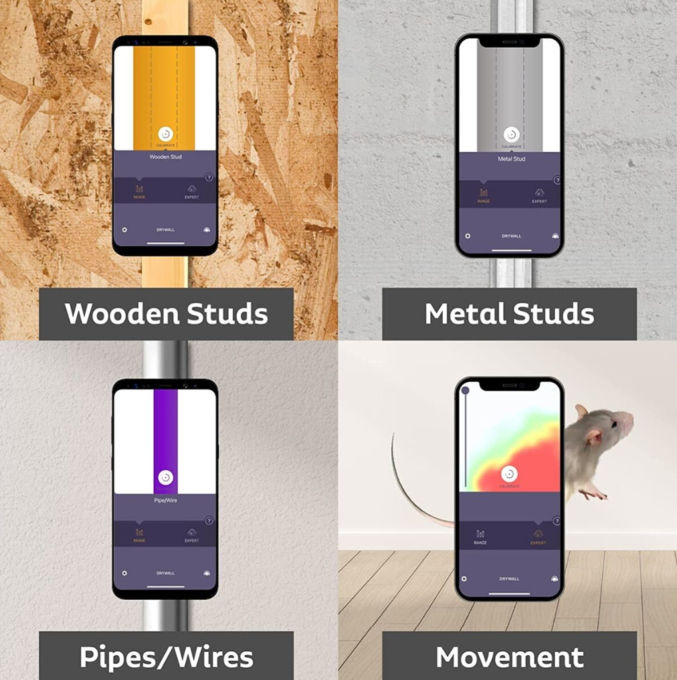As a real estate investor, I’m often needing to know what’s behind some drywall. I normally use a stud finder, but after removing a bunch of drywall, I sometimes find pipes, which, unlike electrical cables, are difficult to move, so I end up wasting my or my contractor’s time patching a wall back up. So, I bought the Walabot DIY 2, which claims to be able to detect wood and metal studs, plastic and metal pipes, and wires behind drywall up to 5/8″ thick and 4″ deep.

I put this to the test and compared it to my Franklin ProSensor M150, which can detect wood and metal studs as well as live wires up to 1.5″ deep.

I tested both sensors on an actual wall with pipes and live wires as well as a test wall.
My test wall below has, from left to right,
- 2×4 stud
- 15A Romex wire (non-live)
- Pressure-treated 2×4 stud
- 2×4 stud
- 2″ black ABS drain pipe
- Metal copper pipe
- 2×4 stud

The Walabot DIY2 detected all items, but it couldn’t differentiate between a wire and a pipe. Also, the Walabot got a bit confused by the 2 touching studs in the middle because of the small gap between the studs. The Franklin only detected the wood studs, but it detected them very well, including the two touching studs.
On an actual wall with wood studs, pipes and live wires, the Walabot performed the same, and it couldn’t differentiate between pipes and wires. The Franklin sensor, however, was able to detect live wires. The lightning symbols lit up yellow when a live wire was detected, as shown below.

Conclusion
It looks like both detectors are needed to see what’s behind your walls. I’d use them as follows:
- Use the Walabot first to mark all wood/metal studs, and pipes/wires.
- Use the Franklin to confirm the location of the wood/metal studs and to determine whether the pipe/wire detections by the Walabot are live wires or pipes. If the Franklin detects live wires, then that’s what they are. If the Franklin doesn’t detect anything where the Walabot detected a pipe/wire, then there’s a pipe there.



